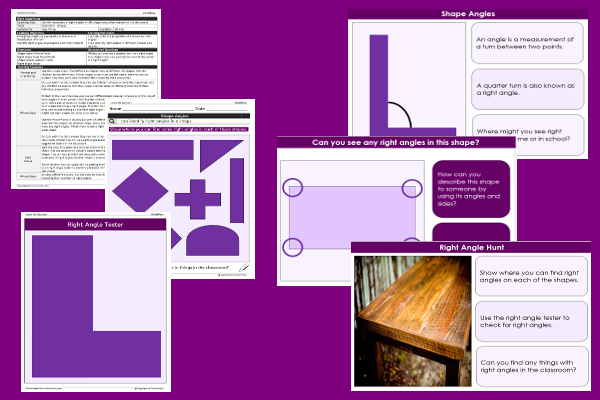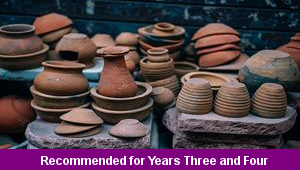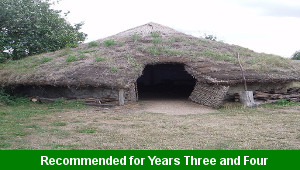Lesson Two – Right Angle Hunt

This maths teaching pack for Key Stage Two gets the children to investigate how to identify and record some examples of right angles that can be seen in a range of 2D shapes and other objects that can be found around the classroom.
The class can practise using a right angle tester to support the identification and classification of angles that can be observed in different locations and places.
Download this teaching pack including a lesson plan, classroom activities and an interactive presentation to investigate how to identify and record some examples of right angles that can be seen in a range of 2D shapes and other objects that can be found around the classroom
Activities in this teaching pack include a worksheet to identify and record where right angles can be seen in a range of different 2D shapes and a template to find examples of right angles in 2D shapes and other objects that can be seen around the classroom.
The interactive presentation gets the children to explore how to identify examples of right angles in 2D shapes and other objects found around the classroom.
This lesson is part of a maths scheme of work to get the children to identify, locate and classify examples of right, acute and obtuse angles that can be observed in a range of different shapes, objects and locations. There are teaching activities for shared learning, differentiated worksheets to support independent learning and interactive presentations to introduce concepts and key skills.
-

Cities, Towns and Villages
Research and present the history of a range of different buildings and people that are part of the local community using a school exhibition
-

Recycling
Research and present some of the benefits and disadvantages that can be produced when recycling different materials at home and in school
-

Viking Pots
Develop and refine a range of different art and design techniques when working with clay to make pots that represent Viking culture and traditions
-

Bronze Age
Research and illustrate how life in Britain developed and changed during the Bronze Age including the growth of communities and trade
